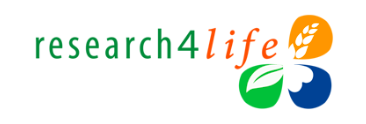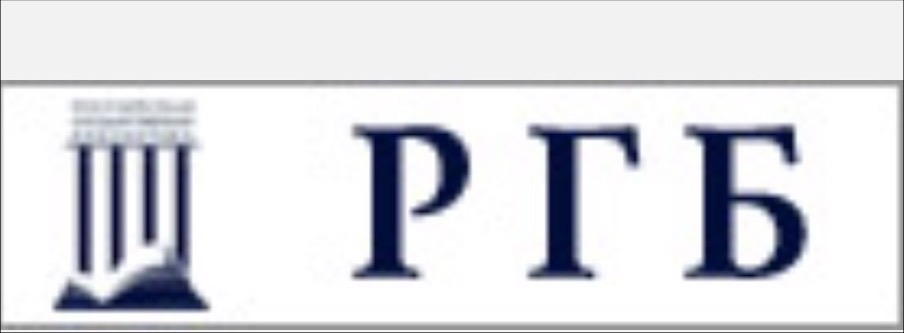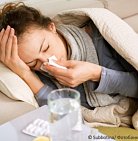Experience with the use of Azoximer bromide for the prevention of acute respiratory infections and COVID-19 in adults from the group with a higher risk of contracting the infection ("red zone" healthcare workers): meta-analysis of controlled clinical trials
DOI: 10.32364/2587-6821-2022-6-11-635-642
Kh.G. Omarova1, A.A. Ploskireva1,2, I.A. Agarkova1, A.V. Gorelov1,3
1Central Research Institute of Epidemiology of the Russian Federal Service for Supervision
of Consumer Rights Protection and Human Well-Being, Moscow, Russian Federation
2Pirogov Russian National Research Medical University, Moscow, Russian Federation
3A.I. Yevdokimov Moscow State University of Medicine and Dentistry, Moscow,
Russian Federation
Aim: meta-analysis of the clinical trials with the use of Azoximer bromide for the prevention of acute respiratory infections (ARI) and the novel coronavirus infection COVID-19 to systematically assess the epidemiological effectiveness of Azoximer bromide in adults at a higher risk of contracting the infection — the "red zone" healthcare workers.
Patients and Methods: the search for clinical trials of Azoximer bromide was performed in the Russian-language and international sources. To identify controlled trials, the authors used such electronic databases as PubMed, Embase, Cochrane Library, eLIBRARY.RU, Scientific Electronic Library, and CyberLeninka. The following keywords were used for conducting the search: Azoximer bromide, respiratory tract infection, COVID-19, prevention, and adults (through May 2022), heathcare workers, medical personnel. Also, clinical trial reports on the use of medications containing Azoximer bromide as the main active ingredient were requested from the manufacturing companies. Publications and reports were selected based on the eligibility criteria. In particular, the assessment included such a parameter as ARI and COVID-19 morbidity. Pointwise estimates of effects were found for conducting meta-analysis which were calculated using odds ratios (OR).
Results: out of the total 64 publications and reports involving over 5060 adults, three clinical trials using Azoximer bromide were selected. These trials had a relatively uniform design and matched the eligibility criteria. The selected trials included 1141 adults 18–69 years old. The treatment group comprised 718 subjects who received Azoximer bromide, and the control group included 423 individuals. The use of Azoximer bromide had the effect of reducing morbidity associated with ARI and COVID-19 in the groups at a higher risk of contracting infection (healthcare workers). For the subjects receiving Azoximer bromide, an OR of not getting sick from ARI and COVID-19 was 3.02 (95% confidence interval (CI) 2.14–3.89); in the control group an OR of not getting sick from COVID-19 was 2.65 (95% CI 1.53–3.77). The authors noted that Azoximer bromide had a good safety profile in all trials.
Conclusion: the epidemiological effectiveness of Azoximer bromide was demonstrated in the groups at a higher risk of contracting the infection (healthcare workers), as proven by the significant reduction of ARI and COVID-19 morbidity. Thus, this drug can be recommended for the prevention of the studied infections during seasonal epidemics.
Keywords: acute respiratory infections, COVID-19, meta-analysis, Azoximer bromide, healthcare workers.
For citation: Omarova Kh.G., Ploskireva A.A., Agarkova I.A., Gorelov A.V. Experience with the use of Azoximer bromide for the prevention of acute respiratory infections and COVID-19 in adults from the group with a higher risk of contracting the infection ("red zone" healthcare workers): meta-analysis of controlled clinical trials. Russian Medical Inquiry. 2022;6(11):635–642 (in Russ.). DOI: 10.32364/2587-6821- 2022-6-11-635-642.
About the authors:
Khadijat G. Omarova — C. Sc. (Med.), Senior Researcher, Central Research Institute of Epidemiology of the Russian Federal Service for Supervision of Consumer Rights Protection and Human Well-Being; 3A, Novogireevskaya str., Moscow, 111123, Russian Federation; ORCID iD 0000-0002-9682-2230.
Antonina A. Ploskireva — Dr. Sc. (Med.), Deputy Director for Clinical Practice, Central Research Institute of Epidemiology of the Russian Federal Service for Supervision of Consumer Rights Protection and Human Well-Being; 3A, Novogireevskaya str., Moscow, 111123, Russian Federation; Professor of the Department of Pediatrics with Children’s Infectious Diseases, Pirogov Russian National Research Medical University; 1, Ostrovityanov str., Moscow, 117437, Russian Federation; ORCID iD 0000-0002-3612-1889.
Irina A. Agarkova — statistician of the Department of Clinical Research, Central Research Institute of Epidemiology of the Russian Federal Service for Supervision of Consumer Rights Protection and Human Well-Being; 3A, Novogireevskaya str., Moscow, 111123, Russian Federation; ORCID iD 0000-0000-0000-0000.
Aleksandr V. Gorelov — Academician of RAS, Dr. Sc. (Med.), Deputy Director for Research, Central Research Institute of Epidemiology of the Russian Federal Service for Supervision of Consumer Rights Protection and Human Well-Being; 3A, Novogireevskaya str., Moscow, 111123, Russian Federation; Head of the Department of Infectious Diseases and Epidemiology, A.I. Yevdokimov Moscow State University of Medicine and Dentistry; 20/1, Delegatskaya str., Moscow, 127473, Russian Federation; ORCID iD 0000-0001-9257-0171.
Contact information: Khadijat G. Omarova, e-mail: omarova@cmd.su.
Financial Disclosure: no authors have a financial or property interest in any material or method mentioned.
There is no conflict of interests.
Received 02.09.2022.
Revised 27.09.2022.
Accepted 20.10.2022.
2. О состоянии санитарно-эпидемиологического благополучия населения в Российской Федерации в 2021 году: Государственный доклад. М.: Федеральная служба по надзору в сфере защиты прав потребителей и благополучия человека; 2022.
3. WHO. Оценка рисков контакта с вирусом COVID-19 для медицинских работников и ведение контактировавших. Временные рекомендации. 4 марта 2020. (Электронный ресурс.) URL: https://apps.who.int/iris/bitstream/handle/10665/331725/WHO-2019-nCov-HCW_risk_assessment-2020.1-rus.pdf?sequence=1&isAllowed=y.
4. Sant’Ana G., Imoto A.M., Amorim F.F. et al. Infection and death in healthcare workers due to COVID-19: a systematic review. Acta Paul Enferm. 2020;33:eAPE20200107. DOI: 10.37689/acta-ape/2020AO0107.
5. Coronavirus latest: WHO says health workers account for 10% of global infections. (Electronic resource.) URL: https://www.dw.com/en/coronavirus-latest-who-says-health-workers-account-for-10-of-global-infections/a-54208221 (access date: 04.02.2021).
6. Nguyen L.H., Drew D.A., Graham M.S. et al. Risk of COVID-19 among front-line health-care workers and the general community: a prospective cohort study. Lancet Public Health. 2020;5(9):e475–e483. DOI: 10.1016/S2468-2667(20)30164-X.
7. Временные методические рекомендации. Лекарственная терапия острых респираторных вирусных инфекций (ОРВИ) в амбулаторной практике в период эпидемии COVID-19, версия 2 (16.04.2020).
8. Караулов А.В., Горелов А.В. Применение азоксимера бромида в терапии инфекционно-воспалительных заболеваний органов дыхания у детей: метаанализ контролируемых клинических исследований. Журнал инфектологии. 2019;11(4):31–41. DOI: 10.22625/2072-6732-2019-11-4-31-41.
9. Вавилова В.П. Применение отечественного иммуномодулятора Полиоксидония в практике лечения детей с патологией лимфоглоточного кольца. Аллергология и иммунология в педиатрии. 2005;1(4):47–53.
10. Вавилова В.П., Вавилов А.М., Черкаева А.Х. Возможности современной терапии острых респираторных вирусных инфекций у детей. Consilium Medicum. Педиатрия (Прил.). 2015;3:76–81.
11. Пинегин Б.В., Дагиль Ю.А., Воробьева Н.В., Пащенков М.В. Влияние азоксимера бромида на формирование внеклеточных нейтрофильных ловушек. РМЖ. 2019;1(II):42–46.
12. Харит С.М., Галустян А.Н. Азоксимера бромид — безопасный и эффективный препарат при лечении острых респираторных инфекций верхних дыхательных путей у детей: обзор результатов двойных слепых плацебо-контролируемых рандомизированных клинических исследований II и III фазы. Педиатрия (Прил. к журн. Consilium Medicum). 2017;2:55–61.
13. Михайленко А.А., Макаренко О.С., Самошин О.А., Сизякова Р.И. Профилактика гриппа и ОРЗ с помощью сублингвального применения полиоксидония®. Иммунология. 2005;26(4):215–217.
14. Скачков М.В. Безопасность и эффективность Полиоксидония для профилактики ОРЗ у длительно и часто болеющих пациентов. РМЖ. 2008;22:1492.
15. Костинов М.П., Свитич О.А., Маркелова Е.В. Потенциальная иммунопрофилактика COVID-19 у групп высокого риска инфицирования. Временное пособие для врачей. М.: Группа МДВ; 2020.
16. Вавилова В.П., Вавилов А.М., Перевощикова Н.К. и др. Опыт профилактики новой коронавирусной инфекции (COVID-19) у медицинских работников. Терапия. 2020;6:93–102. DOI: 10.18565/therapy.2020.6.93-102.
17. Вавилова В.П., Вавилов А.М., Перевощикова Н.К. и др. Способ профилактики острых респираторных инфекций и COVID-19 у медицинских работников. Терапия. 2021;7(4):114–123. DOI: 10.18565/therapy.2021.4.114-123.
18. Касьяненко К.В., Мальцев О.В., Козлов К.В. и др. Оценка профилактической эффективности и безопасности азоксимера бромида у медицинских работников, находящихся в контакте с пациентами, госпитализированными по поводу COVID-19. Эпидемиология и вакцинопрофилактика. 2022;21(1):67–73. DOI: 10.31631/2073-3046-2022-21-1-67-73.
19. Efimov S.V. Letter to the editor: Experience of medical professionals with Azoximer bromide as prophylactic treatment for COVID-19 patients in Chuvashia Republic, Russia. Infect Dis Trop Med. 2021; 7: e721.
20. Официальный интернет-ресурс для информирования населения о коронавирусе (COVID-19). (Электронный ресурс.) URL: https://стопкоронавирус.рф/ (дата обращения: 04.02.2021).
21. Multicenter double-blind placebo-controlled randomized comparative clinical study to investigate efficacy and safety of use of 12 mg Polyoxidonium® tablets (LLC "NPO Petrovax Pharm") as part of combined therapy of acute upper respiratory infections of children aged 3–14 years: Clinical Study Report. Moscow Region: LLC "NPO Petrovax Pharm". M.; 2008.
22. Yang Y., Koh D., Ng V. et al. Self perceived work related stress and the relation with salivary IgA and lysozyme among emergency department nurses. Occup Environ Med. 2002;59(12):836–841. DOI: 10.1136/oem.59.12.836.

This work is licensed under a Creative Commons «Attribution» 4.0 License.




















